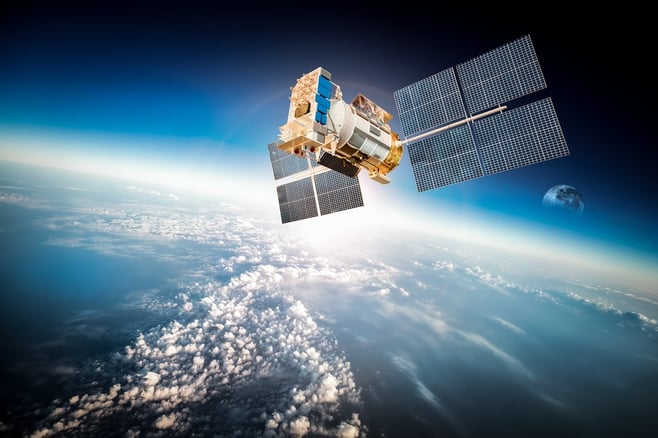Believe it or not, it’s been more than 20 years since GPS technology became available for use in cars and commercial vehicles. The 1995 Oldsmobile Eighty Eight came with an optional feature called Guidestar. It cost nearly $2,000 and promised step-by-step, voice-guided navigation.
The price tag ended up being a bit of a challenge, as did the system’s accuracy. At that time, only a few satellites were available for civilian or commercial use. The rest were reserved for the military, which had been using some form of GPS technology since the 1960s.
In 2000, President Clinton signed an order opening up more satellites for civilian GPS use. A few years later, brands like TomTom, Garmin, and Magellan flooded the market with devices. Today, civilians have access to dozens of satellites and most people can access GPS technology with just a few clicks on their phones.
Of course, GPS technology has also greatly changed the world of manufacturing and logistics. Today you can use GPS technology to locate nearly any package at any time. That gives you better control of your supply chain and distribution processes.
Today’s GPS solutions do more than just report packaging, though. They can also help you monitor your package’s condition and how it’s handled. If you’re not sure what that means, you may not be using GPS technology to its full capabilities. Below are three ways you can use GPS to take greater control of your processes:
1. Track location
Obviously, the tracking the location of an item is still the primary purpose of GPS technology. Many trucking and shipping companies offer GPS solutions, so you may already be using it to some extent.
![]() However, often those shipper-based solutions stay with the truck. What if you want to track your package’s location all the way through the process?
However, often those shipper-based solutions stay with the truck. What if you want to track your package’s location all the way through the process?
The solution is a GPS device in the crate or container. That device should upload data to the cloud, which you can then access through an easy dashboard. That gives you, or your customers or partners, the ability to locate a package at any time with just a few clicks.
Using GPS technology in the actual container can also be helpful when you’re shipping to a large, complex jobsite. Your tracking material may say the package is delivered, but your team on the ground may indicate that they don’t see it. You can use the GPS to give them the crate’s exact location on the work site or in the facility.
2. Monitor exposure to elements
There are new GPS solutions being developed that go well beyond simply tracking location. In fact, they can monitor things like light exposure, moisture and humidity levels, barometric pressure, tilt-and-shock, and much more.
In many cases, you can set your own thresholds and limits with regard to these elements. For instance, if your product is vulnerable to moisture, you may set an upper humidity limit. Your packaging partner should be able to design a package in such a way that limits humidity in the container.
However, if your dashboard shows that humidity levels are rising or that they have crossed the threshold, you’ll get an alert. That will immediately tell you that the package has either been opened or that moisture is somehow getting inside. You can then track down the package and take action to prevent further damage.
3. Track activity with the package
Sometimes, it’s possible that your package could be opened when it’s not supposed to. A great example is in customs. If you’re shipping overseas, you likely know that it can be difficult to explain the contents and nature of your crate to customs officials. They may want to look inside, even though doing so could threaten the stability of the container.
If your GPS shows that your package is at customs and you notice a sharp spike in light exposure or a change in humidity levels, that could be an indication that customs opened your package. You could then get team members on location to repackage appropriately and ensure the product quality.
 Customs is just one example, but there are plenty of others. A team member in a facility may inadvertently open the container at the wrong time. Your shipping company could have an accident that causes the container to open.
Customs is just one example, but there are plenty of others. A team member in a facility may inadvertently open the container at the wrong time. Your shipping company could have an accident that causes the container to open.
Speaking of accidents, you can also use your GPS technology to hold other parties responsible for damage that they caused. For example, if your product arrives damaged at its destination, you may have a dispute with the shipping company as to who is liable. If your GPS shows that the package suffered heavy vibrations and shock while in transport, you can use that information to back up your claim.
You put too much time, money, and other resources into designing and building your industrial products. Why take the risk that those products could be compromised while in transit?
Advanced GPS technology helps you monitor not only the package’s location, but also its condition while it’s traveling from Point A to Point B. If you’re not using GPS in this manner, it may be time to consider how you can better implement the technology into your processes.







Let Us Know What You Thought about this Post.
Put your Comment Below.